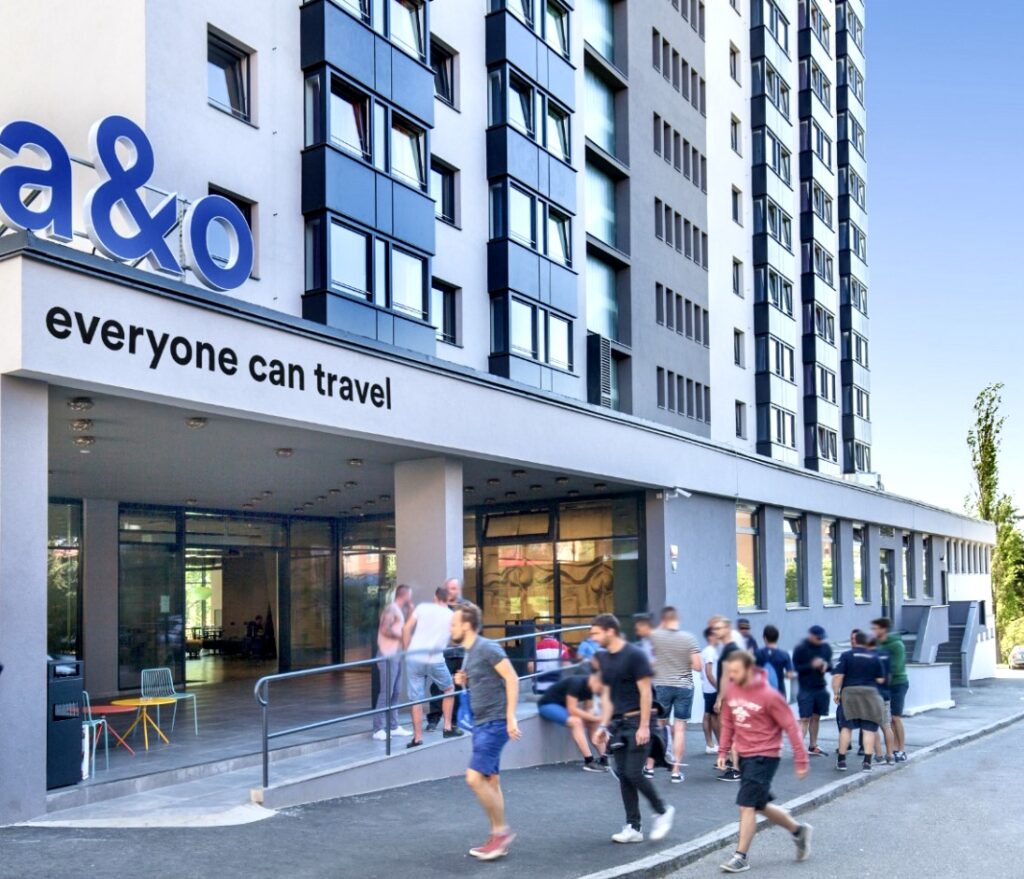With 3.73 kg CO2 per overnight stay, a&o reduces its footprint by a further 35 per cent

European hostel brand a&o has announced a significant breakthrough in its commitment to sustainability through its latest carbon emission results, with 3.73 kilograms of CO2 currently generated per overnight stay in an a&o hostel. This is up to 80 percent less than other hostels and represents a 35 percent decrease compared to a&o’s previous score in 2019 which was 5.9 kilograms per overnight stay. Detailed information on strategies and measures on the way to becoming the first Net-Zero hostel group in 2025 can be found in the latest a&o sustainability report, due to be published later this year.
a&o Founder and CEO Oliver Winter comments: “There is still a lot to do, but this milestone is a real highlight. Previously, our target for 2025 was three kilograms from our own efforts – now we dare to do even more.” Winter believes a reduction in carbon dioxide emissions to below 2.5 kilograms per overnight stay is possible. The remaining amount will be offset.
From 1 July, a&o will also be launching a programme on its website to provide a voluntary contribution for direct bookings. During the booking process, guests will have the opportunity to select “climate option” in the shopping cart to contribute an additional ten cents per night to help make their a&o stay climate neutral. For bookings by club members, this voluntary climate contribution will soon be taken into
account automatically.
In January 2023, a&o received an ESG rating of 2 from the renowned Sustainable Fitch rating agency, the second-best possible rating.
Carbon footprint reduced by around 56 percent compared to 2015
3.73 kilograms of carbon dioxide means a reduction in emissions of around 56 percent in eight years – a&o started measuring in 2015.
Calculated CO2 emissions per guest/overnight stay:
- 2015: approx. 8.5 kilograms
- 2019: approx. 5.9 kilograms
- May 2023: 3.73 kilograms
The value is calculated by taking the total net emissions of all a&o locations, resulting from direct and indirect emissions, and dividing it by the number of overnight stays. A (voluntary) margin is added to cover uncertainties as well. The calculation includes emissions according to Scope1, Scope 2 and Scope 3.
Building efficiency, e-fleet, green electricity and procurement
Arben Maliqi, ESG project manager at a&o, attributes the success primarily to measures in the areas of green power, sustainable procurement, energy conservation, and water and waste reduction. For the future, the sustainability expert sees further significant potential in:
- Optimising the energy efficiency of all buildings by at least one energy class in order to further reduce energy consumption and cut emissions;
- Installation of photovoltaic systems on the roofs – as far as feasible;
- Converting 90 percent of the vehicle fleet to hybrid or electric vehicles;
- Electricity exclusively from renewable energy (through individual green power purchase agreements at all sites – where available);
- Implement a&o standards for responsible sourcing and to ensure an ethically-sustainable supply chain and reduce indirect emissions associated with our operations.
Encouraging “pervasive sustainability” within the corporate culture
Oliver Winter continues: “Our commitment to sustainability should permeate all aspects of our product, with continued growth. It’s about much more than reducing the carbon footprint – our goal is to make a&o a strong example of responsible travel – this requires a comprehensive culture of sustainability among employees and guests.”


Comments are closed.